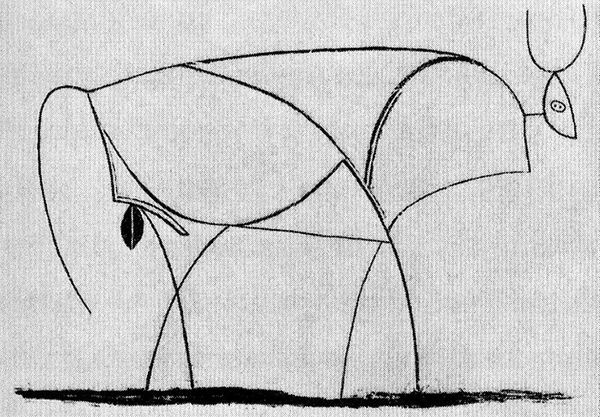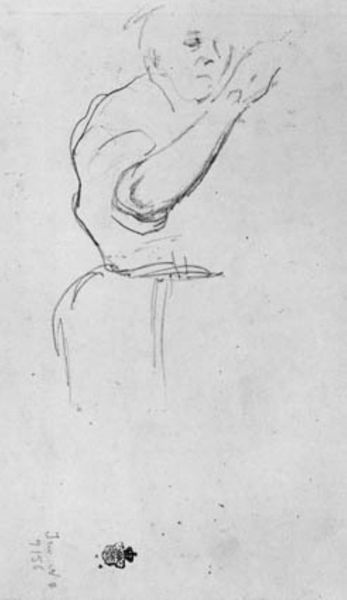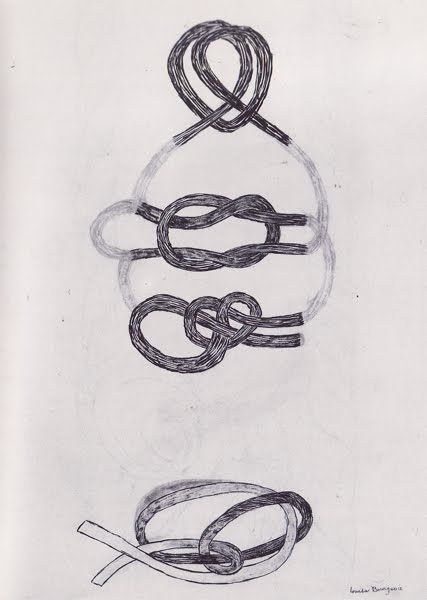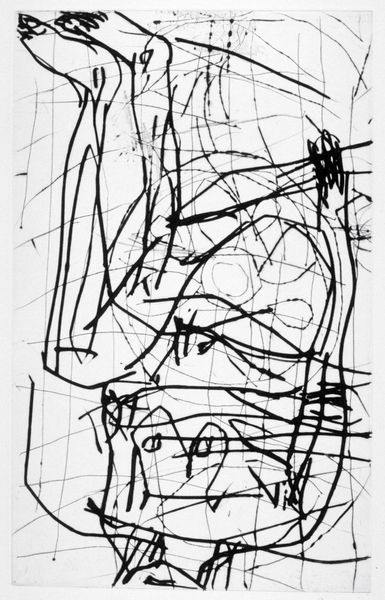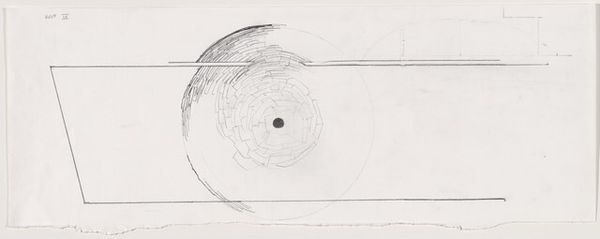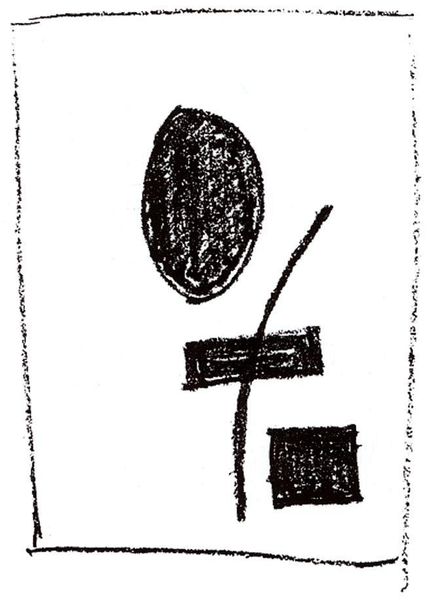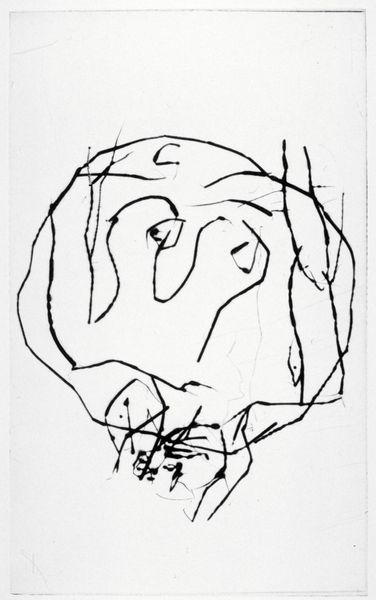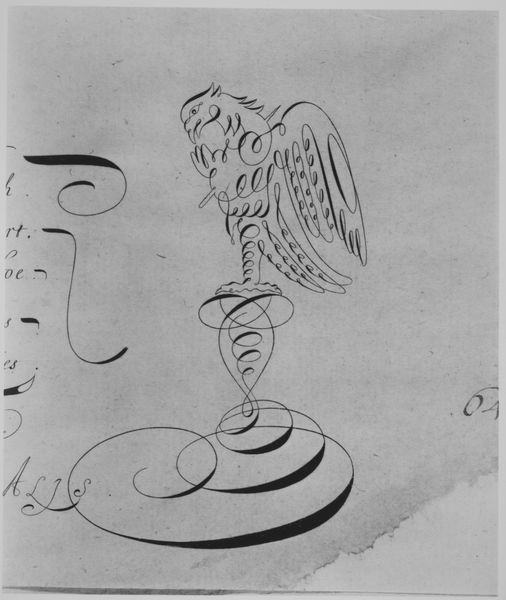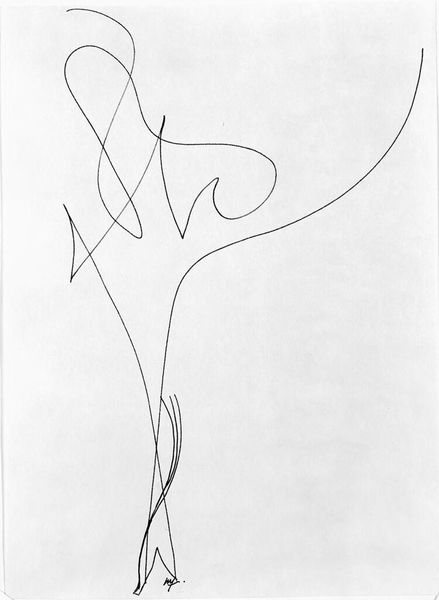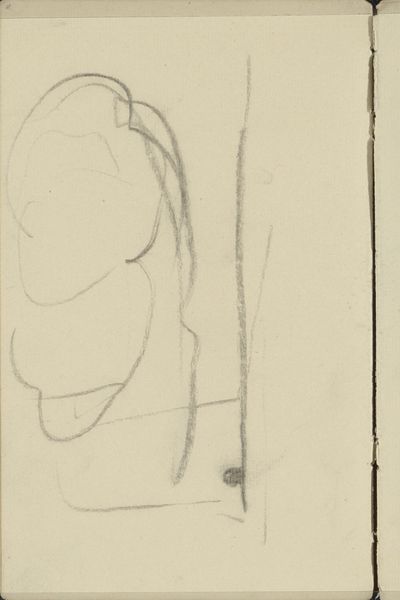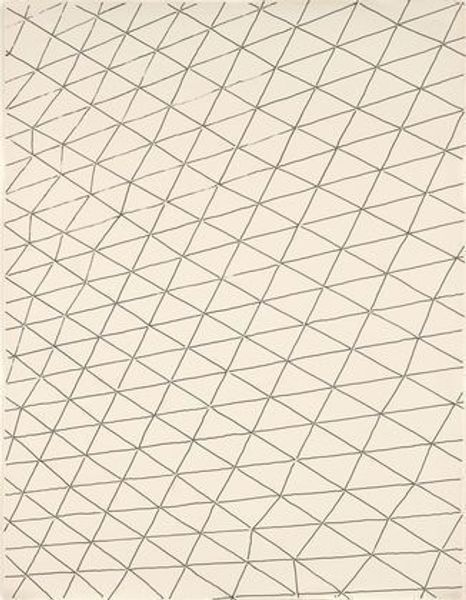
drawing, pastel
#
drawing
#
art-nouveau
#
form
#
abstraction
#
line
#
pastel
Dimensions: 187 mm (height) x 114 mm (width) (bladmaal)
Curator: Look at this intriguing pastel drawing. The artist here is Henri de Toulouse-Lautrec. Its title is *Skitse af fragment af et ornament,* and he produced it somewhere between 1892 and 1900. It resides here at the SMK, Statens Museum for Kunst. Editor: My first thought is: pure, distilled Art Nouveau! Those flowing lines, the abstract suggestion of natural forms… it’s elegant and almost yearning, despite its simplicity. Curator: Indeed. Consider Art Nouveau's rejection of industrialization during that time. Toulouse-Lautrec, amidst societal shifts and the burgeoning avant-garde, captures that essence of returning to nature in stylized forms. Note how these sweeping lines attempt to disrupt industrial production through idealized nature. Editor: Absolutely, and it resonates so deeply with a longer visual history. These motifs -- the swirl, the flowing line -- have echoed through art for centuries! I am seeing visual echoes of ancient Celtic knotwork or even Minoan pottery. Curator: That's interesting. Considering Toulouse-Lautrec, his social circle consisted of outcasts like performers and prostitutes that are traditionally rendered as outsiders; do you suppose this type of simple abstraction offers some quiet acknowledgement? This piece invites us to see beauty and perhaps nobility, through decontextualized form. It rejects the status quo. Editor: A tantalizing point! The image transforms, doesn’t it? It speaks to marginalized histories while simultaneously reaching into humanity's collective image bank for its symbolism. The ornament as a gesture of accessibility towards change? Curator: Perhaps. This exploration between nature and marginalized people presents an interesting study of ornament versus utility, tradition versus modernism. I do appreciate you showing us how these archetypes continue into contemporary culture through artistic memory! Editor: Thank you! It is quite exciting how such minimal tools allow us insight into greater connections.
Comments
No comments
Be the first to comment and join the conversation on the ultimate creative platform.
